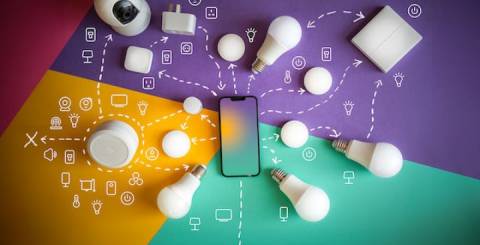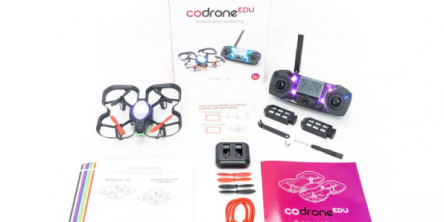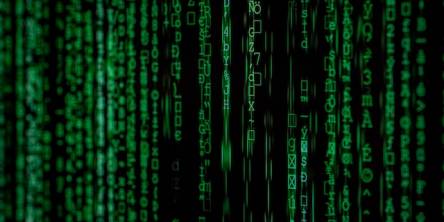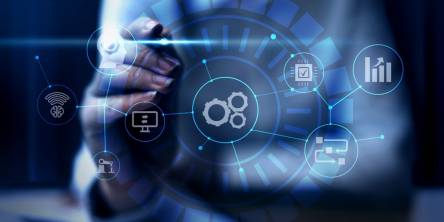Essentials You Need to Know Before Designing IoT Infrastructure

In the dynamic realm of the Internet of Things (IoT), establishing a resilient and efficient infrastructure is imperative for the prosperity of any IoT initiative. Whether working on a smart home system, industrial automation, or healthcare solutions, thoughtful evaluation of diverse factors is indispensable. This blog will allow me to delve into the critical considerations for designing IoT infrastructure, touching upon sensor hardware, connectivity, data processing, user interface (UI), scalability, data management, and more.
Critical Considerations For Designing IoT Infrastructure
- Sensor Hardware: The Foundation of IoT - The choice of sensor hardware is fundamental to any IoT infrastructure. Sensors serve as the sensory input for the Internet of Things (IoT), gathering information from the physical environment. It is crucial to consider sensors' precision and dependability, power usage, and the environmental circumstances in which they will be deployed. Furthermore, assessing sensors' compatibility with current and upcoming devices is essential for ensuring smooth integration.
- Connectivity: Bridging the Gap - Connectivity forms the backbone of IoT infrastructure. Selecting the appropriate communication protocols and technologies is pivotal. Low-power, wide-area networks (LPWAN), Wi-Fi, Bluetooth, and cellular networks are among the options. The choice depends on the IoT application's range, data transfer speed, and power requirements. Security considerations must also be addressed to safeguard data during transmission.
- Data Processing: Turning Raw Data into Insights - The vast amount of data generated by IoT devices requires efficient processing. Edge computing, processing data near the source, reduces latency and bandwidth usage. Cloud computing provides scalability and storage capabilities. Striking the right balance between edge and cloud processing depends on the application's specific requirements. Data analytics and machine learning algorithms can also extract meaningful insights from raw data.
- User Interface (UI): Enhancing User Experience - A well-designed user interface is essential for user acceptance and satisfaction. The UI should be intuitive and user-friendly, whether it's a mobile app, web portal, or a dedicated device interface. Consider the diverse user base and design interfaces that accommodate different levels of technical expertise. Real-time monitoring, alerts, and actionable insights enhance user experience.
- Scalability: Future-Proofing Your IoT Infrastructure - Designing an IoT infrastructure with scalability is critical for adapting to future growth and changes. Ensure that the architecture can seamlessly accommodate increasing devices and users. Scalability should not compromise performance, security, or data integrity. Adopting modular and flexible architectures enables easier integration of new features and technologies as they emerge.
- Security: Safeguarding Against Threats - Security is paramount in IoT infrastructure design. The interconnected nature of devices makes them vulnerable to cyber threats. Implement robust authentication, encryption, and access control mechanisms to protect data and devices. Regular security audits and updates are crucial to staying ahead of evolving security threats. Building security into the design from the outset is more effective than retrofitting it later.
- Interoperability: Ensuring Seamless Integration - Interoperability is essential for smoothly integrating diverse IoT devices and platforms. Adopting open standards and protocols facilitates communication between different devices and ecosystems. This promotes collaboration, allowing devices from other manufacturers to work together seamlessly. An interoperable IoT infrastructure reduces development costs and accelerates time-to-market for new solutions.
- Power Management: Prolonging Device Lifespan - Effective power management is crucial for remote or inaccessible IoT devices. Implementing low-power design principles, optimizing sleep modes, and utilizing energy-efficient components extend the lifespan of devices and reduce maintenance requirements. Energy harvesting technologies, such as solar or kinetic energy, can also be integrated to enhance sustainability.
- Data Management: Handling the Deluge of Data - With the proliferation of IoT devices, managing the enormous volume of data becomes a significant challenge. Implementing adequate data storage, retrieval, and archival strategies is essential. Consider data retention policies, data lifecycle management, and data governance practices. Data quality and integrity are paramount to ensuring that insights derived from analytics are accurate and reliable.
- Regulatory Compliance: Navigating the Legal Landscape - Compliance with regulations and standards is critical in IoT infrastructure design. Different industries and regions may have specific requirements regarding data privacy, security, and environmental impact. Stay informed about relevant regulations and design your IoT solution to adhere to these standards. Taking a proactive approach to compliance reduces legal risks and enhances the trustworthiness of your IoT ecosystem.
Final Words
In conclusion, designing a successful IoT infrastructure requires a holistic approach that considers many factors. You can work with a professional IoT product design and development company that can help you with everything from selecting sensor hardware to ensuring regulatory compliance. They can cover all aspects that play a crucial role in your IoT solution's overall functionality, security, and user experience. By carefully addressing these fundamental considerations, developers and organizations can create robust, scalable, and future-proof IoT infrastructures that deliver value to users and stakeholders alike.
Similar Articles
Enterprise cloud adoption is now a strategic goal. As modern businesses migrate to the cloud for scalability, flexibility, and cost-effectiveness, integration with DevOps principles becomes important. DevOps in the context of cloud adoption is more than just a methodology; it has shown to be a game changer, significantly enhancing efficiency, collaboration, and overall development processes.
Digital transformation is leading the way in reshaping the factories of the future. The term smart factories or industry 4.0, enables manufacturers to refine production processes, manage global market competition, and realize significant returns
In the fast-paced world of photography and videography, staying ahead of the curve requires cutting-edge technology and innovative features. One brand that has been making waves in the industry is Insta360, and for good reason. Insta360 cameras have gained popularity for their exceptional capabilities and user-friendly design.
In the ever-evolving landscape of education, fostering an early interest in coding has become crucial. One innovative tool that has taken the realm of coding education to new heights is the CoDrone. Tailored specifically for young learners, CoDrone not only introduces kids to the fascinating world of programming but also brings their coding adventures to life in the sky
In this digital era cloud computing has become an integral part of business operations. It is flexible, scalable and cost-effective, making it a top choice for many organizations. But with the arrival of various kinds of cloud solutions, selecting which one's right for your business can be a bit overwhelming.
Over evolution in software testing, two prominent testing methodologies have surfaced: Big Data Testing and Traditional Database Testing. Big Data Testing is tailored for handling the extensive amounts, diverse types, and rapid data flow inherent in the big data environment.
In the fast-paced world of supply chain management, it is vital to coordinate logistics operations for businesses aiming to meet customer demands, reduce costs, and stay competitive.
The handling of projects may be characterized as a laborious and complex responsibility. From the formation of employment positions through allocating resources for managing work in progress, significant amounts of business hours and resources are used.
Discover the perfect project management software for your business with our guide. Explore key considerations to streamline your projects effectively. Choose wisely









